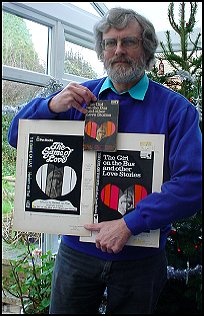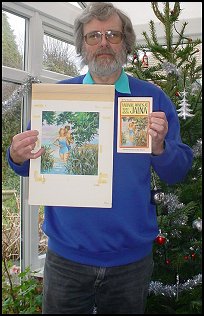|
||||||||||||||||||||||
|
On Tuesday 15th October 1991 at 2pm
BONHAMS
held an auction of 'Original Paperback Cover Artwork from the Pan Archives' The following article is taken from the catalogue and included here with the kind permission of Bonhams  |
||||||||||||||||||||||
|
A BRIEF HISTORY OF PAN |
||||||||||||||||||||||
|
Pan Books became registered as a limited company on !st September 1944 with the express aim under the guidance of Alan Bott to "produce the best possible books at the lowest possible costs". Right from the start , Pan decided to issue popular titles, books they knew would sell in thousands of copies. No book had an initial print run under 47,000 copies. Indeed, the Mason, Kipling, Christie and Hilton titles were all issued in editions of 97,000 copies and Buchan had a print run of 100,00 copies - all sold out. From the beginning Alan Bott realised just how important attractive covers were in selling books. The 1950's and early 1960's were the halcyon days for paperback publishers in Britain, and Pan fared better than most. They had a superb list of authors on their lists, and their cover design was second to none. Without exception all the artists used by Pan during the golden years were freelance commercial artists who put their had to all kinds of work, for all kinds of employers. Many were truly talented artists, others were less gifted but extremely prolific, some were downright eccentric. But they all played an intrinsic part - along with Pan's art department in shaping the Pan look. Although Pan Books had a firm artistic idea of how their books would look in the early 1950's, there certainly wasn't any rigid procedure for getting the right effect, even after George Kamm took over artistic responsibility. It was a rather haphazard affair, and much of the responsibility for the final cover seems to rest firmly with the artist himself. With the advent of the 1960's Pan Book's covers gradually changed their appearance again. Although Peffer, Rex Archer, Boldero and the others still contributes the classical American covers loved by readers. new influences began to appear . Until this point most of the cover designs of the 1950's had been representative of the book's story or subject matter - Peffer, for example, usually illustrated a scene from the book - but now many covers just depicted the essence of the book in a symbolic picture. When David Larkin took over Pan's
cover designs, photography began to play an increasingly dominant part,
and the special period charm of the artwork covers of the previous
twenty years was lost. |
||||||||||||||||||||||
|
|
||||||||||||||||||||||
 |
 |
 |
||||||||||||||||||||
| PAN T12 from 1965 | PAN X537 from 1966 | PAN 3300 2168 0 from 1971 | ||||||||||||||||||||











